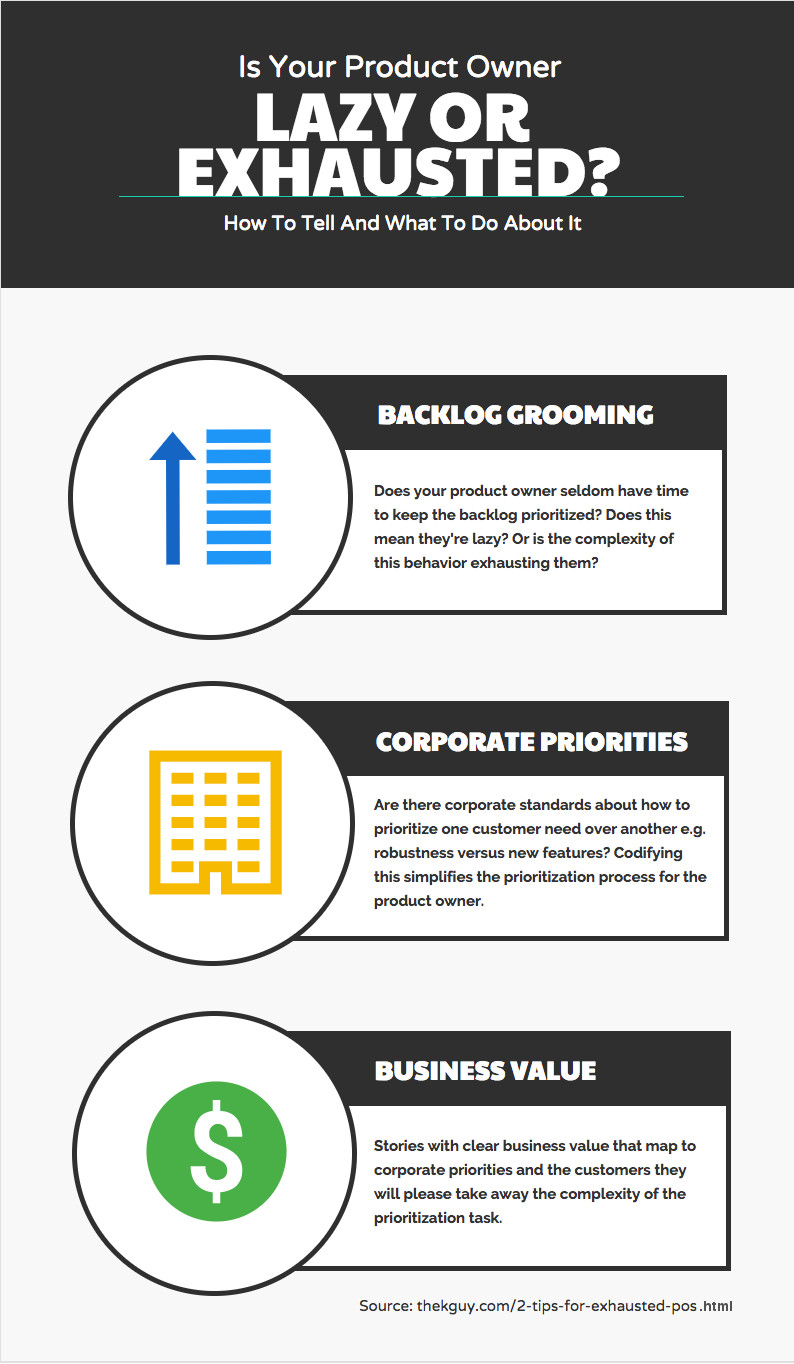In the video linked in the previous blog post, Limitations of Self Control: The Cookies and Radishes Study, we saw how exhaustion can look like laziness. In this post, I’m going to apply the concept of distinguishing laziness from exhaustion, particularly the exhaustion that comes from having to learn a new behavior. A new behavior that often causes problems for new Product Owners on a Scrum team is that of keeping the backlog prioritized.
Backlog Prioritization
Most of us know the benefits of a well-prioritized backlog. It provides:
- guidance to the engineers about what is valued most
- an ability to give realistic answers to customers about when the upcoming features they value are expected to be available to them
But many of us have probably worked with a product owner that seldom has time to keep the backlog prioritized, leading to:
- confusion among the engineers about what stories take precedence over others
- extended sprint planning meetings, if you practice scrum
- frustration for customers who don’t see their needs being met
So what’s the problem? Is the new product owner lazy? Or is the number of ways to prioritize a backlog and the complexity of this new behavior exhausting them? If we assume the former, there is not much we can do other than have a person of authority tell them to straighten up and fly right. But if it’s the latter, then we can look at how we can reduce the complexity of the choice.
Corporate Priorities
How many different customers does this product owner need to please? If there is more than one customer, are there corporate standards about how to prioritize one customer need over another? Perhaps robustness of the software is considered a corporate priority over whiz-bang features. If these prioritizes are codified, it simplifies the prioritization process.
Business Value
It also helps the product owner when there is a direct and obvious relationship between the stories being prioritized and these corporate objectives. Stories that don’t state the business value they represent are exhausting to try to prioritize. The product owner has to take extra time to speak to the story author to try to determine the business value, which is a form of waste. Stories with clear business value that maps directly to corporate priorities and the customers that they will please takes away the complexity of the prioritization task.
So the next time you see a backlog with priorities all out of whack again, don’t immediately ascribe it to a lazy product owner, but instead think about what you can do to help your product owner, whether it be clear corporate priorities or better written stories that state their business value. For more information on how to write such stories, see my previous blog post, 4 Reasons Your User Stories Suck.
I would love to hear what you thought of this article, so feel free to comment below, on The K Guy Twitter, or on The K Guy Facebook fan page.


Pingback: Find The Retro Feeling - The K Guy()